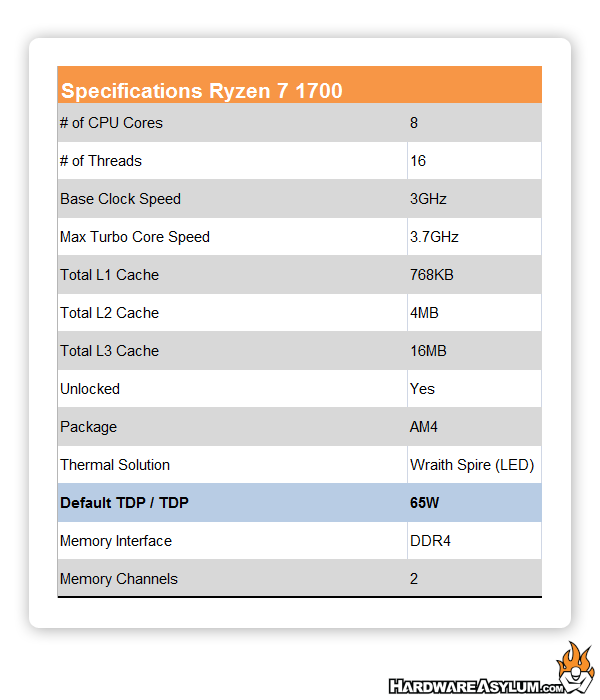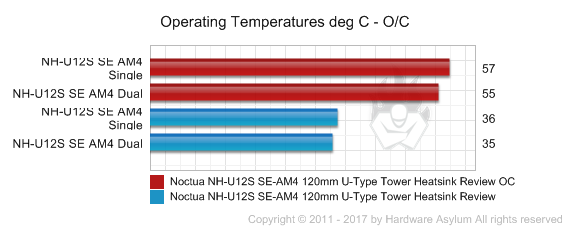Noctua NH-U12S SE-AM4 120mm U-Type Tower Heatsink Review
Author: Dennis GarciaBenchmarks
The Noctua NH-U12S SE AM4 is designed to fit AMD socket AM4 processors. Here is an overview of the system and testing methodology.
Aorus AX370 Gaming 5 – X370 Chipset
AMD Ryzen 1700 (3.0Ghz) Octo Core 8 x 4MB L2 Cache 16MB L3 Cache
Noctua NH-U12S SE-AM4 (Single / Dual Fan)
The CPUID System Monitor was used to obtain and record system temperature data and being that this is a quad core processor we need something that will work across all of the cores at once. For this task we're using a new version of Prime95 (p95v255a) that will allow you to spawn (n) instances to test with.

Editors note: Even though the Windows 10 task manager reported 100% processor usage we could never attain a 100% of the rated heat output as documented by AMD when using Prime95 as a basis for that heat production. Knowing this we ran the stress test until the maximum temperature was attainted and stabilized.
Other things to consider when judging software induced heat output.
a) Clock throttling by the processor at high temperatures.
b) Normal software isn't designed to produce maximum heat output.
c) Variances of cooling temperature.
d) Variances in CPU load.
e) Inaccuracies in thermal diode readouts.
Of course the list goes on..
Our testing methodology is aimed to provide a real world look into this heatsink given the test system provided.

A C/W rating can quickly be calculated using this formula.
C/W = (CPU temp - Ambient temp)/(Variance(%) * CPU Watts)
Allowed variance for this test = 85%
CPU Watts = 65W
0.25 C/W = (36C - 22C)/(.85(65W))
For this next test the CPU speed was cranked up to 3.9Ghz and the test was re-run.

To calculate a new C/W rating for this test we will need to factor in the increased processor wattage. The formula and constants for this are listed below.
ocC/W = dCPU Watts * (ocMhz / dMhz) * (ocVcore / dVcore)2
ocMhz = 3900
dMhz = 3000
ocVcore = 1.4
dVcore = 1.2
The variance still applies for our C/W calculation
Allowed variance for this test = 85%
CPU Watts = 115W
0.35 C/W = (57C – 22C)/(.85(115W))
In our heatsink and waterblock tests we don't really focus on overall load temperatures but rather how well the product can remove heat given a specified heat load. Since this is a real world testing method we need to take into consideration real world variables and estimate tolerances. This is why we normally only apply 85% of the total wattage output to our heat calculations.
The resulting C/W number is used to rate how efficient a heatsink or waterblock is based on the given heat load. These numbers can be used to determine heat capacity, the larger the difference the less efficient the heatsink is. (aka not good for overclocking)
As the charts show we have a heatsink that can clearly handle more than the system can dish out. In terms of raw temp the 57c load under overclocking is a little higher than expected given the wattage output but, is very consistent between the single and dual fan scores.
It should also be noted that the cooler was tested using the default fan profile in the Aorus UEFI. It does scale with CPU temperature and between default and OC clocks there was a 400RPM increase. I would call this a "mild" fan curve and had it been set to a more aggressive curve then temps may have improved.
Keep in mind these calculations are provided for demonstration purposes only and may not reflect the actual lab tested C/W rating, but we're pretty close.

